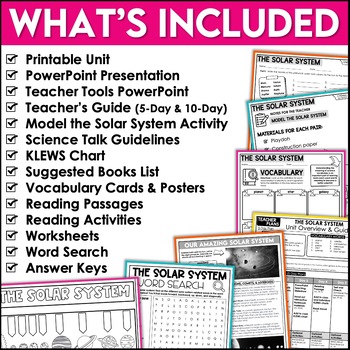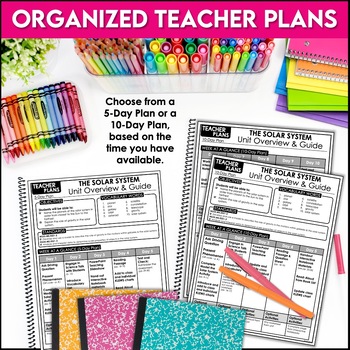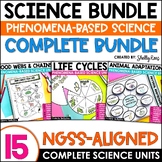Solar System Activities & Worksheets Planets - Phenomenon Based Science
- Zip
What educators are saying
Also included in
- This bundle of 15 amazing phenomenon based science units for NGSS will have your students engaged and having fun learning from the very first activities through the end of unit assessments! The complete science bundle has everything you need, including activities, worksheets, interactive notebooks,Price $59.95Original Price $119.25Save $59.30
Description
This low prep solar system and planets activities unit will have your students engaged and having fun learning from the very first activity through the end of unit assessment! The complete phenomenon based science unit has everything you need, including solar system activities, worksheets, interactive notebooks, projects and more, to learn all about the fascinating world of the solar system.
Click on the PREVIEW above for a closer look at everything included!
Click HERE to SAVE on this unit with the Phenomenon Based Science BUNDLE!
This complete Solar System Unit includes:
- Printable Unit
- PowerPoint Slideshow (Vocabulary, "Name That Planet", and "Fill in the Blank")
- PowerPoint Teacher Tools (Driving Question, Phenomenon, KLEWS Chart, Science Talk Reminders)
- Teacher's Guide (Choose from 5-Day or 10-Day plans)
- Driving Question and Opening Phenomenon
- Model the Planets Activity
- Science Talk Guidelines
- KLEWS Chart
- CER Template
- Suggested Books List
- Vocabulary Sheets
- Planet Fact Sheets
- Exploring Our Solar System Reading Passage & Questions
- Our Amazing Solar System Reading Activity
- Word Search
- Interactive Notebook Pages
- Unit Test
- Vocabulary Notecards
- Vocabulary Posters (choose from B/W or Color)
- Answer Keys
These Planets and Solar System activities are perfect for:
- Science Lessons
- Reading Centers
- Cross-Curricular Plans
- Sub Plans
- Independent Work
- Small Groups
- Interactive Notebooks
- Whole Group Instruction
Don't forget that leaving feedback earns you points toward FREE TPT purchases. I love that feedback!
Also, FOLLOW ME and be notified when new products are uploaded. New products are always 50% off for the first 24 hours they are posted. It pays to follow me!
As always, please contact me with any questions!
Thank you so much,
Shelly Rees






